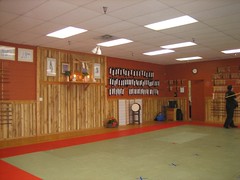 I’m proud to announce that after several months of very hard work and significant effort on the parts of the University of San Francisco and our instructors, the Advanced Social Media certificate course is now live and available to the world!
I’m proud to announce that after several months of very hard work and significant effort on the parts of the University of San Francisco and our instructors, the Advanced Social Media certificate course is now live and available to the world!
In this eight week course, you’ll get instruction from true social media experts and marketers like Jay Berkowitz, Jim Kukral, CC Chapman, and myself, plus expert legal advice from lawyers David Bates and Gaida Zirkelbach on managing the risks and best practices of social media from a legal perspective.
What’s so different about this course versus every other social media thing on the Web?
Since I designed the course, I have a fairly good idea of what went into it and who’s teaching, and I can say we’ve got some great content and a top-notch roster of experienced people who’ve generated real world results using social media.
When I put it together a few months ago, I wanted to create a course that approached different practice areas of social media – marketing, advertising, PR, small business, agency work – and cross-cut that with social media practices. For example, the lectures fall into 7 tracks:
Track 1: Basics, review, concepts
Track 2: Marketing perspective
Track 3: Public relations perspective
Track 4: Service perspective
Track 5: Monetization/commercialization perspective
Track 6: Executive/strategic perspective
Track 7: Tool Time
Then the course runs over 8 weeks, with these 8 topics:
Week 1: Introduction to Social Media
Week 2: Listening/Monitoring
Week 3: Creation
Week 4: Communcation
Week 5: Metrics and Science
Week 6: Legal and Ethical Considerations
Week 7: Adopting Social Media
Week 8: Case Studies
Overall, I think the course delivers an exceptionally solid, well-rounded perspective of social media. The one aspect of this course that makes it so very different from other social media courses is the lab track. Each week, I ask course participants to do some outside work in “labs” that should deliver to graduates of the course a working social media presence at the end of the 8 week course:
Lab 1: Set up accounts on major social media sites, plus a personal blog and affiliate account
Lab 2: Create a listening dashboard in Google Reader
Lab 3: Create content for your site and distribute on social media platforms
Lab 4: Participate in one open forum (e.g. #journchat)
Lab 5: Analyze 5 weeks’ of your data and derive conclusions about where your traffic is coming from and why
Lab 6: Assess potential risks and practices for your own niche
Lab 7: Make at least $1 in affiliate sales from your efforts thus far.
Lab 8: Draft your own case study and publish on your blog
If students fully participate in the course and do the coursework and the labs, by the time they graduate, they’ll have a serious social media presence and the skills and experience needed to make social media work for them and the businesses or organizations they work for. There’s no other course quite like this one out there, and so I’m really thrilled that it’s live and running. On top of that, the course is offered through an accredited university and has financial aid and other goodies available with it that many other courses don’t have.
If you’d like to know more about this course, please visit this page on Edvisors.com and request your free information packet.
Full disclosure: Edvisors.com has an affiliate relationship with USF and earns a very nominal fee for referring prospective students to USF. I in turn work for Edvisors.com and a very small part of that very nominal fee ends up in my pocket as part of my salary.
Did you enjoy this blog post? If so, please subscribe right now!
Enjoyed it? Please share it!
Get this and other great articles from the source at www.ChristopherSPenn.com









